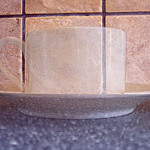
Credit: Lynn B
Practical cloaking technology is a long sought-after tool that has yet to be obtained. However, researchers at the U.S. Department of Energy and UC Berkeley claim that this might not be true for much longer. In a recent paper, they explained that they had created a thin, flexible “skin” cloak that could hide an object from sight by channelling visible light around it. From the military to the civilian sector, disappearing from vision is undeniably desirable, leaving many eagerly waiting for new developments.
At the core of invisibility technology are metamaterials: Materials that are engineered to exhibit properties not found in nature. By designing nanostructures of a specific size, shape and orientation, electromagnetic waves can be controlled; To render an object invisible, visible light must be bent, curved, and scattered. Previous attempts at manifesting the phenomenon resulted in clumsy and easily detectable “blankets” that bent light sequentially at each layer of the material. Their key flaw was that they created a phase shift in the waves of reflected light, making them fairly noticeable under any degree of scrutiny. On the other hand, The efficacy of the “skin” cloak is in its relative simplicity, as the cloak is only 80 nanometers in thickness; instead of a thick blanket, the new technology consists of an impossibly-thin sheet. It is comprised of microscopic gold antennas, brick-like in shape and proportion, that are capable of reflecting light without changing its phase or frequency. In other words, light reflecting off of the sheet appears identical to light reflecting off of the background. This is because both reflections are of the same light: Incoming waves pass around the cloak, hit the background, and reflect back to the observer, all the while passing around (or seemingly “through”) the cloaked article. In a short video, the researchers demonstrated their ability to cause a microscopic object to completely disappear.
However, the deception doesn’t stop there; In addition to perfectly redirecting light, the cloak can be tuned in a way that one could create images that aren’t actually there. According to the researchers, “you could cover a tank with it, and make it look like a bicycle”. Despite these exciting accomplishments, it is important to remember that the technology is very much a work in progress. As such, certain flaws are still present in the design: For one, the covered object must be completely still, since the tuning of the cloak must be matched to the background. Also, the current sheet is only capable of reflecting light at one wavelength, 730 nanometers. In order to be applicable to the real-world, it would have to reflect light across the visible spectrum.
Despite these flaws, the results are promising; Real, practical invisibility technology could be right around the corner. At the turn of the 21st century, such a thing would have been relegated to the pages of sci-fi and fantasy novels, never to see (and bend) the light of day. Knowing how close we are to seeing invisibility leap from fiction to reality, you have to ask: What are other products of an over-active imagination could one day become an actuality?
Arjun Thomson-Kahlon
